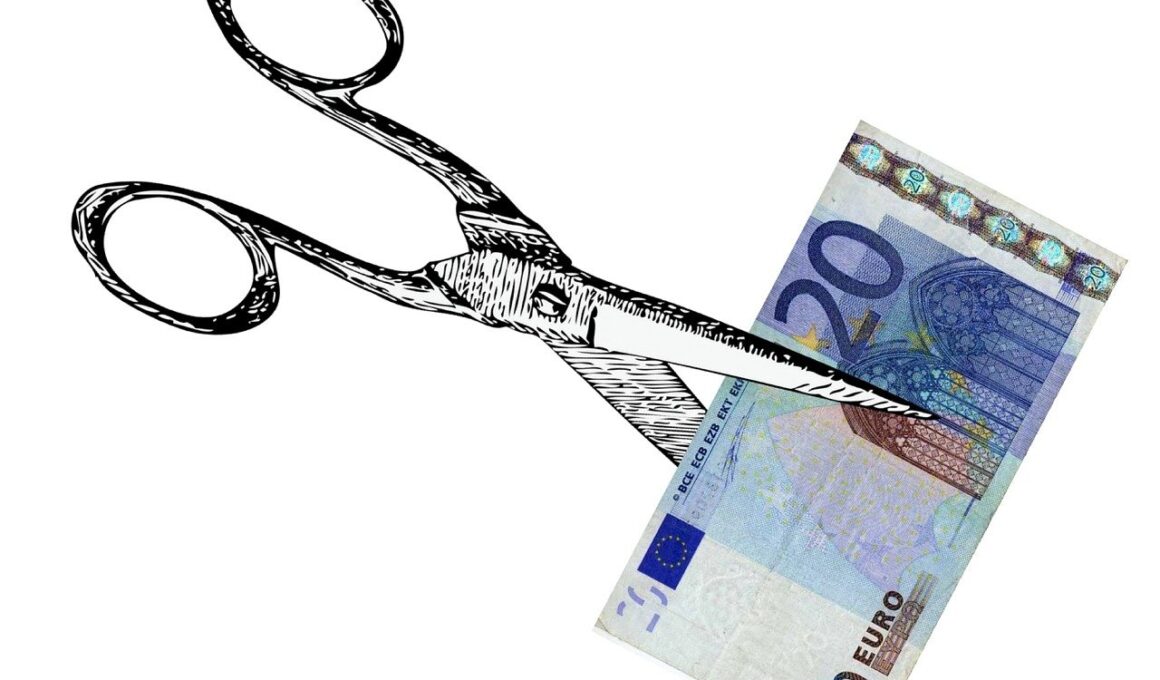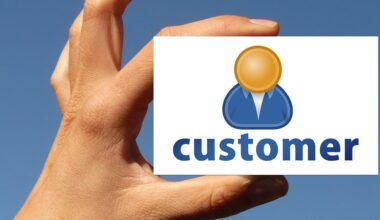How to Cut Advertising Costs Without Sacrificing Quality
Managing an advertising budget effectively is essential for any business aiming to thrive in a competitive market. High advertising costs can significantly impact profitability, but cutting costs doesn’t mean compromising on quality. First, it is crucial to analyze current spending habits and identify areas where efficiency can be enhanced. A good approach is to closely examine the performance metrics of your campaigns. By calculating ROI, you can determine which advertising channels deliver the best results. Focus on channels that yield the highest returns and consider reallocating budget from low performers to more effective platforms. Additionally, harnessing digital advertising techniques can reduce costs while maximizing reach. Channels like social media or email marketing are often lower in cost than traditional methods, enabling targeted messaging to specific demographics. Maintaining a strong online presence helps improve engagement and foster customer loyalty. Regular monitoring and adjustments based on performance data can lead to sustainable cost reductions without affecting the overall quality of your advertising initiatives. In this article, we’ll explore strategies to achieve just that, ensuring you maintain optimal quality in your advertising efforts while significantly trimming unnecessary expenses.
In today’s fast-paced digital environment, it is crucial to leverage technology when managing your advertising budget effectively. Investing in advertising management software can help streamline processes, allowing for better tracking and analysis of spending. These tools can provide valuable insights into consumer behavior, enabling you to optimize your campaigns accordingly. Automated budgeting allows for adjustments in real-time based on performance data, dramatically reducing waste. Moreover, consider combining targeted marketing with data analytics to create personalized campaigns. Tailoring your ads to specific audience segments is essential to improve engagement while staying within budget constraints. Use A/B testing to evaluate ads before launching them widely. This tactic helps identify which versions resonate most with your audience, enabling you to save costs on less effective options. Emphasizing cost-effective digital channels, such as pay-per-click advertising, can lead to significant savings while generating effective leads. Remember to negotiate with vendors for better rates and explore co-marketing opportunities with other brands to stretch your advertising dollars further. Ultimately, effective advertising budget management is about making informed decisions while adapting quickly to market shifts without sacrificing the quality of your messaging.
Prioritize Your Target Audience
Understanding your audience is integral to cutting advertising costs without losing quality. When you target the right audience, your advertisements become more effective, leading to higher conversion rates. Conducting thorough market research is key. Utilize surveys, social media engagement, and analytical tools to gather insights about your audience’s preferences and pain points. Once you have identified your target audience, segment them into smaller groups based on shared characteristics. This process allows for the creation of tailored campaigns that resonate individually, leading to message relevance and increased response rates. Moreover, personalize content and offers within advertisements to enhance user experience and increase engagement. Tactics may include dynamic ad content that varies based on user data or location, thus making the ad feel more individualized. Furthermore, always ensure that your advertising visuals reflect the demographic you aim to reach. Investing time in understanding your audience will yield long-term savings. By focusing your efforts on specific segments rather than the mass audience, you simplify your strategy and enhance both efficiency and effectiveness, which can lead to reduced overall costs over time.
Another effective method for cutting advertising costs is to leverage content marketing. Creating valuable content that educates or entertains can boost brand awareness and generate organic leads, minimizing reliance on paid advertising. Blogs, podcasts, and videos can be produced at a relatively low cost compared to traditional advertisements. By providing valuable content, you establish authority in your industry, ultimately fostering trust with your audience. Over time, this leads to higher engagement and conversion rates. Utilizing SEO techniques to enhance your content is also vital. Crafting content optimized for search engines improves visibility and can attract traffic without direct costs per ad impression. Share your content through social media channels to encourage organic reach and interaction. Additionally, consider repurposing existing content into different formats, such as turning a blog post into a video or an infographic. This strategy maximizes the utility of your content while minimizing costs. Furthermore, implementing a consistent content calendar ensures you maintain a steady stream of fresh material, keeping your audience engaged without incurring increased costs. Content marketing must be part of your strategy to build long-term relationships while reducing immediate advertising expenses.
Consider Collaboration and Partnerships
Engaging in collaborations and partnerships can significantly reduce your advertising costs while maintaining quality. Joint advertising efforts allow you to pool resources with complementary businesses, sharing costs for campaigns that benefit both parties. Identify brands with similar target audiences and explore potential co-branding opportunities. Collaborating on events, webinars, or promotions enables both brands to tap into each other’s customer bases, amplifying reach without the need for substantial additional investments. This approach not only minimizes expenses but also enhances credibility, as audiences often view collaborations between trusted brands as more legitimate. Additionally, collaborate with influencers who align with your brand values. Micro-influencers, in particular, can be more cost-effective than traditional advertising and offer a highly engaged following. Developing genuine relationships with influencers results in authentic endorsements, promoting your brand without the hefty price tag often associated with larger influencers. Moreover, fostering partnerships for content creation can also extend reach. For example, jointly hosted content like podcasts or blogs can attract interested audiences while splitting advertising expenses. Consider these strategies to maximize your advertising budget while ensuring impactful and high-quality engagements with your customer base.
Furthermore, regularly reviewing your advertising strategies and performance metrics is essential for maintaining an effective budget. Analyze which campaigns yield the best results while identifying trends and patterns in your advertising performance. Use analytics tools to track engagement, conversion rates, and customer feedback. With this data, you can identify low-performing ads that need to be reevaluated or restructured. Creating a continuous improvement feedback loop ensures that campaigns evolve based on performance, leading to increased effectiveness over time. Cut back on inefficient or redundant strategies while enhancing those that show potential for growth. Additionally, schedule regular check-ins with your advertising team to discuss successes, challenges, and new ideas. Fostering a culture of innovation within your team can lead to creative solutions that save costs without sacrificing quality. Encourage collaboration and brainstorming sessions to explore new avenues for reaching your audience effectively. Analyzing your previous campaigns critically makes it possible to identify what works best. Ultimately, a systematic approach and open communication ensure your advertising costs remain manageable while achieving the desired quality and results that align with your business goals.
Utilize Social Media Marketing
Social media marketing is an excellent and cost-effective opportunity to showcase your brand while minimizing advertising costs. The platforms provide various ways to create organic content that engages consumers, such as posts, stories, and reels. These formats are generally free to use, enabling brands to reach large audiences without significant financial investment. Additionally, social media insights can guide your strategies, helping you identify the best times to post content for maximum engagement while also informing you about what types of content resonate well with your audience. Developing quality content that encourages shares, likes, and comments will extend your reach even further, capitalizing on organic growth channels. Furthermore, consider investing in ads on these platforms, as they often offer targeted options at competitive rates compared to traditional advertising. When targeted appropriately, social media ads can yield impressive ROI while reaching specific demographics. Engage with your audience through interactive features like polls and Q&A sessions to stimulate conversation and strengthen brand loyalty. Include calls-to-action in your content, encouraging audience participation while enhancing reach without compromising quality. This strategy helps ensure your advertising budget works effectively, allowing you to rise above competitors in your industry.
In conclusion, businesses can significantly cut advertising costs without sacrificing quality by implementing strategic approaches. By thoroughly analyzing spending, leveraging technology, prioritizing targeted messaging, and creating valuable content, companies can achieve effective advertising without overspending. Partnerships, collaboration, and utilizing social media as part of your advertising strategy also contribute to reducing expenses. Regularly reviewing performance metrics ensures your approaches stay relevant and effective. With consistent evaluation and adjustment based on performance data, organizations can optimize their advertising budgets. By focusing on high-return strategies and reducing reliance on less effective costly ads, maintaining a high quality of engagement becomes attainable. Ultimately, effective budget management is about striking a balance between cost-cutting techniques and delivering quality messaging, allowing your brand to connect with your audience meaningfully. By following these guidelines, your advertising strategies can be both efficient and impactful, fostering business growth without breaking the bank. Adapt the mentioned tools and techniques to your specific business needs for optimal results, ensuring that every advertising dollar spent contributes to greater engagement, brand loyalty, and potential conversions, leading toward enhanced overall performance.


